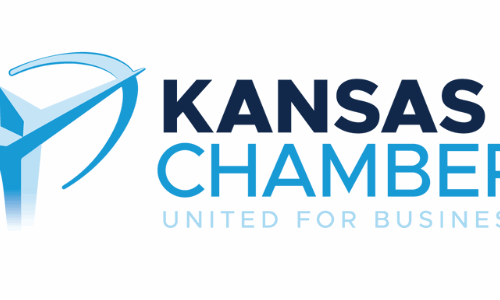Do you want to provide benefits to your members in exchange for their membership dues? Are you thinking about offering different membership tiers for your organization? Or are you considering ways to increase member involvement with your association? If so, it’s time to take a look at your membership model.
A membership model is a form of organizational funding where members pay recurring dues in order to stay involved. Your membership model will look differently depending on your organization’s unique goals and audience. Knowing the pros and cons of each membership model option can help you choose the right one to suit your organization’s needs.
Ready to learn more about membership models and choose the best system for your organization? Let’s get started!
What Is a Membership Model?
You can think of your membership model as a business plan. It’s the structure behind how you’ll collect and use membership fees. It also informs multiple aspects of your operations, such as:
- Membership levels, including group and individual options
- Revenue sources beyond membership dues
- Marketing needs and activities
- Events, conferences, and other membership benefits
- Overall operating budget and finances
There are a variety of organizations ranging from for-profit to nonprofit that use a membership model, such as:
- Clubs for different sports, hobbies, or other interests
- Associations for professionals within different industries
- Nonprofits that support a specific cause, mission, or institution
- Businesses that provide brand loyalty and discounts
For example, Amazon Prime is a business membership that provides free shipping, access to other discounts, and streaming services for its dues-paying members.
A nonprofit art museum might also use a membership model to support its gallery. In this example, membership dues may provide members with early access to new shows or discounts in the museum’s bookstore.
Membership models can also incorporate different membership tiers, where members who opt to pay higher dues receive additional benefits.
Benefits of Using a Membership Model for Your Organization
Using a membership model can provide several benefits to your organization. A membership model can help you:
- Boost revenue by creating upsells for members willing to pay more for added benefits
- Attract new members by crafting unique offerings for different membership tiers
- Increase membership satisfaction and member retention by offering flexible membership options
- Gain access to valuable data by segmenting your membership population based on membership level
By taking time to think through your dues structure, member benefits, and membership levels, you’ll be able to establish a secure foundation for your organization to grow.
Benefits of Using Membership Tiers for Your Members
Using a tiered membership model also offers many benefits for your members. This membership model allows your members to:
- Have flexibility in the ways and frequency in which they engage with your organization
- Choose to upgrade or downgrade their plan at any time to best suit their schedules, budgets, and needs
- Access a more personalized membership experience by knowing exactly what their membership tier provides
A well-structured membership model makes for happy members, as they have the freedom to grow and change with your organization in a way that best fits their goals and lifestyle.
Types of Membership Models
Using a tiered membership model also offers many benefits for your members. This membership model allows your members to:
There are two main types of membership models: flat rate and tiered levels. Each option comes with its own benefits and drawbacks that can impact which membership format is right for you.
Flat Rate
In a flat rate membership model, all members pay the same rate for their membership and receive the same level of benefits.
For example, if you’re a local softball team with a flat rate membership model, every player might pay $50 per season. In return, they each receive a team jersey, access to the city’s ballpark, and the ability to participate on a team for the season.
- Pros: A flat rate membership model makes managing member dues a more straightforward process. Everyone is billed the same amount and receives the same benefits, so there’s less room for error in ensuring each member gets the right access.
- Cons: You could be missing out on critical revenue by not having something to offer members who are willing to pay more and get more involved. Additionally, you might be alienating those who would join if there were more affordable options. By selecting a flat rate, you’re banking on the majority of people being satisfied with that level, which can reduce engagement and interest.
Tiered Levels
In a tiered levels membership model, you use tiered dues to offer different membership packages and allow members to choose their level of involvement.
There are three main ways to create membership tiers:
- Value: You can organize your membership levels around different values, where increased dues are equal to increased benefits for the member. For instance, your lowest level might provide access to your membership directory, online forum, and learning management system. Your next level can access all of those benefits, plus your mentorship program and conference registration discounts. Finally, your highest level can also access your job board, monthly print magazine, and exclusive networking opportunities.
- Career Stage: Many organizations offer less expensive membership tiers for students, interns, or members who are early in their careers, and more expensive memberships for established career professionals.
- Donation-Based: If your organization is a nonprofit, you can orient your membership tiers around different donation levels. You can offer various perks and incentives at each level. For instance, perhaps you offer a free t-shirt and tote bag to your lowest-level donors and a gift card or local business discount to your mid-tier donors. For your major donors, you might name programs or buildings after them.
As with the flat rate membership model, tiered levels come with challenges and opportunities:
- Pros: You can create tailored benefits that align with members’ needs at each level. For example, you can offer greater benefits to those who are willing to pay more while offering alternatives for those who want to pull back on their membership. This flexibility increases retention through greater engagement and the ability to work with your members’ individual budgets.
- Cons: Your pricing structure can become more complex. You risk members being confused or upset if you don’t have a solid marketing plan in place for communicating these changes. You’ll also need to double-check that you’re sending each member the right benefits based on the level they signed up for.
6 Steps for Choosing the Right Membership Model
To select the membership model that’s the best fit for your organization, you’ll need to assess your organization’s priorities and goals. Here’s how to do it!
1. Analyze your member audience.
First, take a look at your existing membership. Ask questions such as:
- Why did our members choose to join our organization?
- What benefits do our members currently receive?
- What are some benefits members have said they’d like to see added?
- What career levels do our members fall into?
A great way to gather this information is through member needs assessments, which let you collect real-time data from your members. You can use this information to see what’s working and what needs to be improved for both current and prospective members.
2. Choose your membership model.
Select which membership model you want to use based on what you think will offer the greatest benefits to both your organization and your members.
If you’re a club, it might make sense to stick with a straightforward flat rate membership model. However, if you’re an association with members from a range of different professional backgrounds, you may want to consider a tiered model.
Remember that if you’re going with a value-based structure, you need to ensure your upper tiers are valuable enough that some members actually choose to join at those levels. If you offer all benefits at the lowest level, there aren’t any incentives for members to pay more.
3. Determine your dues structure.
Once you’ve determined your membership model, you’ll want to attach a monetary amount to each membership level you offer.
An easy way to draft your dues structure is to assess what similar organizations are charging. Aligning your membership dues with other groups within your field will help you to stay competitive.
4. Brand your membership program.
Get creative and choose descriptive names for your membership tiers. For example, if you’re a culinary association, your membership levels might be named:
- Executive Chef (highest tier)
- Head Chef
- Sous Chef
- Junior Chef (entry-level tier)
You can also use different colors or precious metals to name your membership tiers, such as bronze, silver, and gold.
On your membership website, you’ll also want to describe each level, including its:
- Offered benefits
- Required dues
- Term length
5. Communicate membership changes transparently
If this is your first time offering a tiered membership model, or if you’ve decided to make changes to your existing tiers, be transparent with your current members about the change.
Topics you’ll want to communicate include:
- Why you’re implementing the change
- How you anticipate this change will benefit members
- When the change will go into effect
- Who to contact if members have questions
6. Market your new membership model.
Marketing your new membership model provides an opportunity for continued communication and promotion to your current members about the change. It also lets recruit new members who might be interested in the updated membership model.
Use your social media, email newsletters, and website to share stories, graphics, and other digestible tidbits that express how this change will benefit members. Use these marketing channels frequently and communicate clearly during the initial phase of the change.
Design a Membership Model That Works for You and Your Members
Understanding the different membership model options can help you decide which is the best route for your organization. You’ll want to look at which would provide maximum benefit to both you and your members. Once you establish and brand your membership model, remember to communicate transparently about the change.
Want to make this switch as smooth as possible? Using the right membership management software can make the process of implementing a membership model a breeze. Platforms like MemberClicks make it easy to establish membership levels, collect dues, and remind members to renew.
















